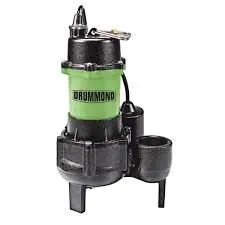Miao
- Afrikaans
- Albanian
- Amharic
- Arabic
- Armenian
- Azerbaijani
- Basque
- Belarusian
- Bengali
- Bosnian
- Bulgarian
- Catalan
- Cebuano
- Corsican
- Croatian
- Czech
- Danish
- Dutch
- English
- Esperanto
- Estonian
- Finnish
- French
- Frisian
- Galician
- Georgian
- German
- Greek
- Gujarati
- Haitian Creole
- hausa
- hawaiian
- Hebrew
- Hindi
- Miao
- Hungarian
- Icelandic
- igbo
- Indonesian
- irish
- Italian
- Japanese
- Javanese
- Kannada
- kazakh
- Khmer
- Rwandese
- Korean
- Kurdish
- Kyrgyz
- Lao
- Latin
- Latvian
- Lithuanian
- Luxembourgish
- Macedonian
- Malgashi
- Malay
- Malayalam
- Maltese
- Maori
- Marathi
- Mongolian
- Myanmar
- Nepali
- Norwegian
- Norwegian
- Occitan
- Pashto
- Persian
- Polish
- Portuguese
- Punjabi
- Romanian
- Russian
- Samoan
- Scottish Gaelic
- Serbian
- Sesotho
- Shona
- Sindhi
- Sinhala
- Slovak
- Slovenian
- Somali
- Spanish
- Sundanese
- Swahili
- Swedish
- Tagalog
- Tajik
- Tamil
- Tatar
- Telugu
- Thai
- Turkish
- Turkmen
- Ukrainian
- Urdu
- Uighur
- Uzbek
- Vietnamese
- Welsh
- Bantu
- Yiddish
- Yoruba
- Zulu
Telephone: +86 13120555503
Email: frank@cypump.com
Jul . 28, 2024 15:38 Back to list
Optimizing Performance and Efficiency of Slurry Screw Pumps in Industrial Applications for Enhanced Productivity
Understanding Slurry Screw Pumps A Comprehensive Overview
In various industrial applications, handling viscous and abrasive materials is a significant challenge. Among the solutions available, slurry screw pumps have emerged as an effective choice due to their unique design and operational advantages. This article delves into the principles, components, and applications of slurry screw pumps, showcasing their relevance in modern industries.
What is a Slurry Screw Pump?
A slurry screw pump is a type of positive displacement pump specifically designed to transport high-solid-content fluids, commonly referred to as slurries. These slurries can contain a mixture of solids, liquids, and gases, prevalent in industries such as mining, wastewater treatment, and construction. The pump operates using a screw mechanism which allows for the efficient movement of heavy, viscous materials.
Working Principle
The primary working principle of a slurry screw pump involves the rotation of a helical screw within a cylindrical casing. As the screw rotates, it creates a pressure differential which sucks the slurry into the pump. The helical motion of the screw moves the slurry along the length of the casing towards the discharge point. This mechanism minimizes turbulence and shear stress, making it suitable for transporting fragile materials without damaging them.
Key Components
1. Screw Shaft The central component that drives the pumping action. The design and material of the screw shaft are crucial, especially when dealing with abrasive slurries.
2. Casing This encases the screw and provides the necessary structural integrity. It is typically made of durable materials to withstand wear and corrosion.
3. Bearings Support the screw shaft and help maintain alignment during operation. Proper bearing selection is vital to ensure longevity and efficiency.
4. Seals Prevent leaks and protect the internal components from contamination and external damage.
5. Drive Mechanism Most slurry screw pumps are powered by electric motors, though hydraulic drives can also be used depending on the application requirements.
Advantages of Slurry Screw Pumps
slurry screw pump

- High Efficiency Slurry screw pumps are designed for high efficiency, which is particularly beneficial when transferring large volumes of material.
- Versatility These pumps can handle a wide range of slurries, including those with varying solid contents and viscosity levels. This versatility allows their application across multiple industries.
- Low Maintenance The robust construction of slurry screw pumps, combined with fewer moving parts, translates to lower maintenance requirements and operational costs.
- Gentle Handling The pump design minimizes shear forces, ensuring that the transported materials, especially fragile ones, remain intact.
Applications
Slurry screw pumps find applications across different sectors including
- Mining Used for transporting mineral slurries from processing plants to storage or further processing areas.
- Wastewater Treatment Efficiently move sludge and other waste materials through treatment processes.
- Construction Useful for transporting cement slurries and other mixtures in concrete production and foundation work.
- Food and Beverage Employed in the food industry for moving thick mixtures, maintaining product integrity during processing.
Conclusion
In summary, slurry screw pumps play a vital role in various industries that require the efficient transportation of viscous and abrasive materials. Their innovative design and operational efficiency make them a preferred choice in the handling of slurries. Understanding how these pumps work and their advantages can help businesses make informed decisions when selecting the right pumping solutions for their specific needs. As industries continue to evolve, the demand for reliable and efficient pumping systems like slurry screw pumps will remain critical for operational success.
-
Custom Drilling Mud and Slurry Pump Supplier - High Efficiency, Tailored Solutions
NewsJun.10,2025
-
Supply Vertical Submersible Sewage Pump High-Efficiency WQ/QW Pumps Supplier
NewsJun.10,2025
-
Premium Sewage Ejection System & Pumps Efficient Waste Removal
NewsJun.09,2025
-
Premium Wholesale Slurry Pump Impellers Durable & Efficient Slurry Handling
NewsJun.09,2025
-
Top Sewage Pump Companies Durable Industrial Solutions for Efficiency
NewsJun.09,2025
-
Heavy Duty Slurry Pumps - OEM High Performance & Bulk Wholesale
NewsJun.09,2025










